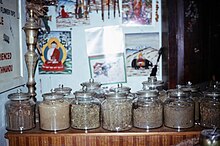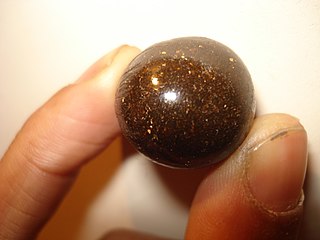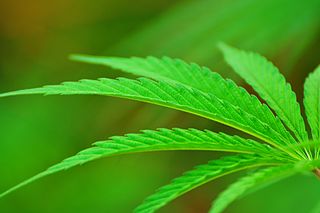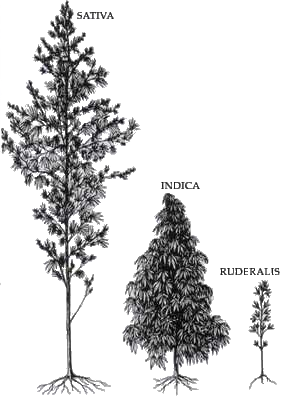
Cannabis has been illegal in Nepal since 1976, but the country has a long history of use of cannabis for Ayurvedic medicine, intoxicant and as a holy offering for Hindu god Shiva and continues to produce cannabis illicitly.

Cannabis has been illegal in Nepal since 1976, but the country has a long history of use of cannabis for Ayurvedic medicine, intoxicant and as a holy offering for Hindu god Shiva and continues to produce cannabis illicitly.



Nepal has used psychoactive cannabis for centuries, and as early as the 1700s Nepalese charas was recognized as the best available. Nepal was a gateway destination for every Ganja lover. There used to be a street known as Freak Street where Marijuana products were sold openly by licensed agents. The popular street is still in front of Basantapur Durbar today known as the hippie street but eventually has lost its charm now. Everyone was benefited including the Government, farmers and the businessmen from the cultivation, sales, and production of Marijuana. [1]
In the early 1800s, commentator Francis Buchanan-Hamilton noted:
In Nepal, the Gangja, Charas, or Cannabis sativa, as mentioned, is a common weed: but in that country, it is not cultivated, although much used for intoxication. [2]
In the 1960s, the Hippie Trail began to route young Western adventurers through Nepal. The stable traditional cannabis economy was rocked by the influx of demand, and the heavy usage by visitors normalized and made cannabis consumption trendy locally. The increased demand and linkage to outside markets led to an increase in hashish production, and smuggling routes were established through India and the wider world. [3]
In 1973, Nepal canceled the licenses of all cannabis shops, dealers, and farmers, under pressure from the United States and the international community. [4] However, personal cultivation and use were unaffected, and cannabis commerce continued illicitly. The loss of $100,000 in government revenues caused disruption, and later in the 1970s, attempts were made at crop substitution. [1]
Nepal enacts Narcotic Drugs (Control) Act, 2033 (1976) on 22 September 1976 prohibiting the cultivation, production, preparation, purchasing, selling, distributing, exporting or importing, conduct any trafficking, storage of, or consumption of cannabis. [5] The Act classifies cannabis as narcotic drugs that includes (1) Any plant of cannabis/ marijuana genus including hemp and siddha and also includes the leaves and flowers thereof. (2) Natural resin, gum, and sap obtained from ... cannabis/ marijuana plants, and, (3) Any substance containing any of the extract, substance, essence, mixture, and beverage containing any of the substances mentioned above. However, the prohibition of the Act is not to be applied to the Government of Nepal or any institution working under the full and complete supervision and control of the Government of Nepal after obtaining a special license for cultivating, preparation, producing, manufacturing, exporting, or importing narcotic drugs for the purposes of medicine or scientific research or from selling narcotic drugs to any person on the recommendation of a recognized medical practitioner. The Government of Nepal may frame Rules regulating the production of hashish (chares) from wild cannabis/marijuana plants growing in the western hilly region of Nepal and the collection, storage, sale, and purchase of such hashish (chares) for a specified period. The government of Nepal may, if it deems necessary, for cannabis/ marijuana, for the purpose of preparing medicine, make available in the required quantity of cannabis/ marijuana out of the cannabis confiscated or seized under the Act to any agency which is engaged in the production of medicine.
Cannabis can be found in the wild in all hilly areas of Nepal. There has been some report of illegal cultivation in the country. [6]
In Nepal, cannabis seeds are also used in making pickles "bhang ko achar". The dried seeds are ground and then mixed with aalo (potato). This is common in a hilly area like Kathmandu, Pokhara, Surkhet of Nepal.[ citation needed ]
It is used in the Ayurvedic medicine by Singha Durbar Vaidyakhana.
Cannabis is considered as the gift of Lord Shiva, and is considered as holy offering in the festival of Mahashivaratri. On the day of Mahashivaratri, officials historically tolerated cannabis use, but starting around 2018, police said they would arrest festival observers found smoking in public places during shivaratri. [7] [8]
Member of Parliament from the Communist Party, Birodh Khatiwada, and 47 other party lawmakers filed a motion in parliament in January 2020 calling for the legalization of Cannabis. [9] Another legalization bill, supported by the national health minister, was introduced in 2021. [10]

The prohibition of drugs through sumptuary legislation or religious law is a common means of attempting to prevent the recreational use of certain intoxicating substances.

Bhang is an edible preparation made from the leaves of the cannabis plant originating from the Indian subcontinent. It has been used in food and drink as early as 1000 BC in ancient India. Bhang is traditionally distributed during the spring festival of Maha Shivaratri and Holi. Bhang is mainly used in bhang shops, which sell the cannabis-infused Indian drinks bhang lassi and bhang thandai.

Charas is a cannabis concentrate made from the resin of a live cannabis plant and is handmade in the Indian subcontinent and Jamaica. The plant grows wild throughout Northern India along the stretch of the Himalayas and is an important cash crop for the local people. The difference between charas and hashish is that hashish is made from a dead cannabis plant and charas is made from a live one.

The Single Convention on Narcotic Drugs, 1961 is an international treaty that controls activities of specific narcotic drugs and lays down a system of regulations for their medical and scientific uses; it also establishes the International Narcotics Control Board.

The Narcotic Drugs and Psychotropic Substances Act, 1985, commonly referred to as the NDPS Act, is an Act of the Parliament of India that prohibits a person the production/manufacturing/cultivation, possession, sale, purchasing, transport, storage, and/or consumption of any narcotic drug or psychotropic substance. The bill was introduced in the Lok Sabha on 23 August 1985. It was passed by both the Houses of Parliament, received assent from then President Giani Zail Singh on 16 September 1985, and came into force on 14 November 1985. The NDPS Act has since been amended four times — in 1988, 2001, 2014 and 2021. The Act extends to the whole of India and it applies also to all Indian citizens outside India and to all persons on ships and aircraft registered in India.

In the United States, increased restrictions and labeling of cannabis as a poison began in many states from 1906 onward, and outright prohibitions began in the 1920s. By the mid-1930s cannabis was regulated as a drug in every state, including 35 states that adopted the Uniform State Narcotic Drug Act. The first national regulation was the Marihuana Tax Act of 1937.

Drug liberalization is a drug policy process of decriminalizing or legalizing the use or sale of prohibited drugs. Variations of drug liberalization include: drug legalization, drug re-legalization and drug decriminalization. Proponents of drug liberalization may favor a regulatory regime for the production, marketing, and distribution of some or all currently illegal drugs in a manner analogous to that for alcohol, caffeine and tobacco.

Canada's drug regulations are measures of the Food and Drug Act and the Controlled Drugs and Substances Act. In relation to controlled and restricted drug products, the Controlled Drugs and Substances Act establishes eight schedules of drugs and new penalties for the possession, trafficking, exportation and production of controlled substances as defined by the Governor-in-Council. Drug policy of Canada has traditionally favoured punishment for the smallest of offences, but this convention was partially broken in 1996 with the passing of the Controlled Drugs and Substances Act.
The major drug laws of India are the Narcotic Drugs and Psychotropic Substances Act (1985) and the Prevention of Illicit Trafficking in Narcotic Drugs and Psychotropic Substances Act (1988).

Jhochhen Tole, popularly known as Old Freak Street, or Freak Street is a small neighbourhood located at the south of Kathmandu Durbar Square.

Cannabis in India has been known to be used at least as early as 2000 BCE. In Indian society, common terms for cannabis preparations include charas (resin), ganja (flower), and bhang, with Indian drinks such as bhang lassi and bhang thandai made from bhang being one of the most common legal uses.

Cannabis is illegal in Egypt, however it is widely used but not publicly. Law enforcements are often particularly lax when it comes to cannabis smokers. Also, its use is a part of the common culture in the country for many people. Large-scale smuggling of cannabis is punishable by death, while penalties for possessing even small amounts can also be severe. Despite this, these laws are not enforced in many parts of Egypt, where cannabis is often consumed openly in local cafes.

The cultivation and use of cannabis is illegal in the Philippines under Republic Act 9165 or the Comprehensive Dangerous Drugs Act of 2002. As the Philippines is a signatory to the 1961 United Nations Single Convention on Narcotic Drugs, Cannabis is classified as a Schedule I drug, which limits its use to medical and scientific purposes. Marijuana is the second most used drug in the Philippines, after shabu (methamphetamine), and most cultivation in the country is for local consumption. Cannabis is cultivated mostly in the remote, mountainous regions of Luzon and Mindanao.

Cannabis in Pakistan is illegal for recreational use, although since September 2020, extracts of cannabis can be used for industrial and medical use. Cannabis is widely consumed in Pakistan as charas and bhang.
The list includes and details significant events that occurred in the global history of national-level implementations of, or changes made to, laws surrounding the use, sale, or production of the psychoactive drug cannabis.

The Cannabis Act (C-45) of June, 2018 paved the way for the legalization of cannabis in Canada on 17 October 2018. Police and prosecution services in all Canadian jurisdictions are currently capable of pursuing criminal charges for cannabis marketing without a licence issued by Health Canada. The Supreme Court of Canada has held that the federal Parliament has the power to criminalize the possession of cannabis and that doing so does not infringe upon the Canadian Charter of Rights and Freedoms. The Ontario Court of Appeal and the Superior Court of Ontario have, however, held that the absence of a statutory provision for medical marijuana is unconstitutional, and to that extent the federal law is of no force and/or effect if a prescription is obtained. The recreational use of cannabis has been legalized by the federal government, and took effect on 17 October 2018.

Terms related to cannabis include:

The history of cannabis and its usage by humans dates back to at least the third millennium BC in written history, and possibly as far back as the Pre-Pottery Neolithic B based on archaeological evidence. For millennia, the plant has been valued for its use for fiber and rope, as food and medicine, and for its psychoactive properties for religious and recreational use.

The following outline is provided as an overview of and topical guide to the plant Cannabis sativa and its relatives Cannabis indica and Cannabis ruderalis, the drug cannabis (drug) and the industrial product hemp.

Cannabis tourism, also called marijuana tourism, is travel/tourism related to cannabis or incorporating cannabis use.